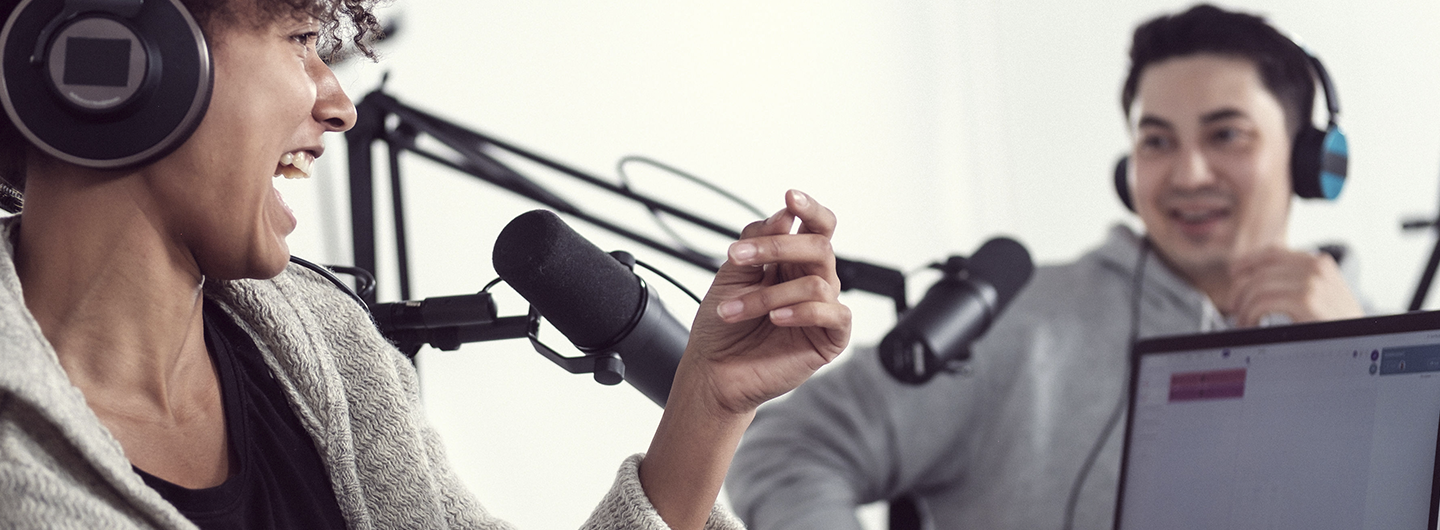
Publishing Soundtrap Projects With Google Sites, Canva, or Wakelet!
October 19, 2022In this video, Soundtrap education specialist Mickey Barret will show you and your students how they can take their amazing creations and start publishing Soundtrap projects through Google Sites, Canva, and Wakelet.
Why Should Students Publish their Projects?
As an educator, it’s important to understand why students should publish their projects. Publishing Soundtrap projects allow students to:
- Showcase their projects
- Create one place as an artifact of learning
- Inspire others in your classroom and beyond
Not only does sharing projects give students the ability to inspire others and showcase their projects, it gives them the confidence to continue to build on their skills and supplement their knowledge outside of the classroom.
Exporting from Soundtrap
As Mickey explains, publishing projects usually start with exporting the files from Soundtrap.
Just go to File → Export → Export to MP3
Then upload your file where you typically export your projects. Most people typically use Google Drive where they can upload their projects into a specific folder that is saved on the cloud. Then, you can publish using the three methods explained in the video: Google Sites, Canva, or Wakelet.
Upload to Google Sites
Google Sites is a website creation tool included as a part of the Google Editors Suite offered by Google. It is included in the G-Suite for Business and Education. If you’re a Google for Education district or school, you and your students should have access to Google Sites.
To upload to Google Sites, open your waffle and select Google Sites. Once the tab is opened, your students can choose from a series of templates, or they can start from scratch with a blank template.
If starting from scratch, students can easily drag and drop or add as many content blocks as they need. They can just click and add their artwork, and a title, and easily link the podcast or project to the content blocks.
Google Sites truly give your students accessibility and the ability to customize their site how they see fit. If you’re an educator just beginning to teach your students about publishing their content, Google Sites is a great place to start building a portfolio.
Upload to Canva
Canva is the ultimate tool for creators and educators alike. Teaching your students how to utilize the Canva platform can help them in the future when creating social media graphics, presentations, posters, and other types of visual content.
To upload to Canva, choose education presentation. It works a lot like a Google Slide. From there, you can give your students a template to add their assets to the slide and design it however they want.
From there, they can link their project uploaded on Google Drive wherever you guide them on their Canva project. From there, your students can copy their links and share their presentations with you for feedback or grading. Canva can help students start publishing Soundtrap projects like pros!
Upload to Wakelet
Wakelet is another “free-for-educators” way of taking content that your students create and putting it all in one place to publish and share with their class, community, or beyond.
You’ll need to go in and create a new account. After that, you and your students will go to “create a new collection.” Then, you’ll be able to organize your collection, give it a title, and add a description.
Followed by creating the assets, you can link your podcast from Google Drive and link your artwork from Canva or upload it yourself. Ensure your students add a title and give a short description for their podcast projects.
As you can see, there are endless ways that students can publish Soundtrap projects that they create in the Studio. We hope that you’ll get your students in the studio and let them publish for a broader audience and then share with us on social all of their creations.
We can’t wait to see what they make!
What Is Soundtrap For Education?
Soundtrap is learning for today. It’s an online learning tool that enables teachers to follow the STEAM curriculum through music and podcasts. It fosters a collaborative environment where students develop their creative and communication skills. From primary school to university, Soundtrap’s simple interface is designed to suit students of all levels in any musical classroom. It has a huge collection of loops and software instruments that can support even professionals. You and your students can record songs directly with the computer microphone or plug in an instrument. Soundtrap works on any device, wherever you are. All projects are saved in the cloud, which means you can access them anywhere. It is tailored to suit BYOD schools and makes life easier for administrators because of its multi-platform capability. Managing projects has never been so easy. Soundtrap for Education is collaborative. Students can collaborate on projects together via video and chat within Soundtrap.
_______________________________
IMPORTANT LINKS
▶️ Start a Free Soundtrap Teacher Trial: https://www.soundtrap.com/edu/
▶️ Soundtrap Resources: https://edu.soundtrap.com/teacher-resources/
▶️ Become a Soundtrap Certified Educator: https://academy.soundtrap.com/
STUDENT COURSES
📌 Level 1 Soundtrap Student Course: https://youtube.com/playlist?list=PLt…
📌 Level 2 Soundtrap Student Course: https://youtube.com/playlist?list=PLt…
📌 Level 3 Soundtrap Student Course: https://youtube.com/playlist?list=PLt…
APP-SMASHING TUTORIALS
🎵 Let’s App Smash! Canva for Education x Soundtrap for Education
https://edu.soundtrap.com/lets-app-smash-canva-for-education-x-soundtrap-for-education
🎵 Chrome Music Lab With Soundtrap:
https://edu.soundtrap.com/app-smashing-tutorial-chrome-music-lab-with-soundtrap
🎵 Canva With Soundtrap:
https://edu.soundtrap.com/app-smashing-tutorial-canva-with-soundtrap
🎵 Book Creator With Soundtrap:
https://edu.soundtrap.com/app-smashing-tutorial-book-creator-with-soundtrap
🎵 Soundtrap and Adobe Express:
https://edu.soundtrap.com/app-smashing-tutorial-soundtrap-and-adobe-express
🎵 Soundtrap and Scratch:
https://edu.soundtrap.com/app-smashing-tutorial-soundtrap-and-scratch
🎵 Soundtrap and Google Tools:
https://edu.soundtrap.com/app-smashing-tutorial-soundtrap-and-google-tools
🎵 Noteflight With Soundtrap:
https://edu.soundtrap.com/app-smashing-tutorial-noteflight-with-soundtrap
🎵 Flat io With Soundtrap:
https://edu.soundtrap.com/app-smashing-tutorial-flat-io-with-soundtrap
🎵 Soundtrap and Wakelet:
https://edu.soundtrap.com/app-smashing-tutorial-soundtrap-and-wakelet
 EDU Portal
EDU Portal


